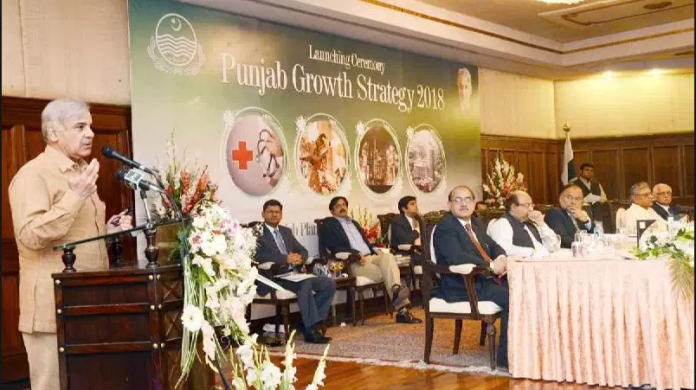Lahore: The Punjab government could not move an inch on its growth strategy approved in March 2015, the implementation documents available with Pakistan Today revealed.
The Punjab Growth Strategy (PGS) documents mentions the doubling of Punjab’s GDP growth in five years (from 3.5 per cent to 7 per cent), which was necessary to absorb one million people entering the workforce every year. The PGS was developed under the Planning and Development Department with the support of eminent Pakistani economists and World Bank through jobs and competitiveness technical assistance which was finalised in June 2015.
According to the document, private investments were forecast to increase from US$8 billion in 2013 to US$17.5 billion in 2018, and exports to grow by 15 per cent a year, particularly in labour intensive manufacturing given Punjab’s abundant and competitive labour force.
The other main sources of growth were agribusiness, mining, information and communication technologies (ICT) and productive urbanization. The strategy is focused on inclusive, regionally balanced and environmentally sound growth.
The strategy calls for reforms (at both the federal and provincial levels) to improve the investment climate as well as increase quantity and quality of public investments in support of infrastructure and skills development (in partnership with the private sector).
The main areas of reforms at federal level include security, trade, access to finance and energy policies, while at the provincial level, it includes policies governing business entry and operations, contract enforcement, property registration, building regulations, agribusiness, irrigation, mining, access to skills, regional economic planning, land use rules, access to industrial land, public-private partnerships (PPPs), property tax, urban water, sales tax and governance.
Manufacturing, which accounts for 21 per cent of Punjab’s GDP, is identified in the PGS as a major growth driver and employment generator. The priority industries discussed in the PGS were textiles, apparel, leather goods; light engineering, automotive and agribusiness.
The industrial structure is tilted toward small and medium enterprises (SMEs) often grouped as clusters –particularly within the “Golden Triangle” (Sialkot, Gujrat and Gujranwala) north of Lahore. Some of these clusters date back more than one hundred years and have achieved global pre-eminence (for example, the sports goods and surgical equipment clusters of Sialkot). Despite this proven potential, manufacturing growth in Punjab is stalled at 1 per cent a year.
The PGS objective was to attain 10 per cent manufacturing growth in five years. The main constraints identified in the PGS are: lack of reliable energy supply, high regulatory compliance costs, inadequate/insufficient industrial land, lack of financing and a growing technology gap.
Furthermore, much of manufacturing activity is taking place informally in and around rapidly growing cities where there is insufficient land allocated for industrial purposes. This is putting stress on infrastructure and resulting in an increased pollution threat because there are no effective combined effluent treatment plants (CETPs) in Punjab.
There are also concerns for workers’ safety and child labour, following the accident in the Sundar Industrial Estate in November 2015,as well as regulatory (for example, the Factory Act) and physical constraints like lack of daycare facilities in industrial estates) for female workers.
























